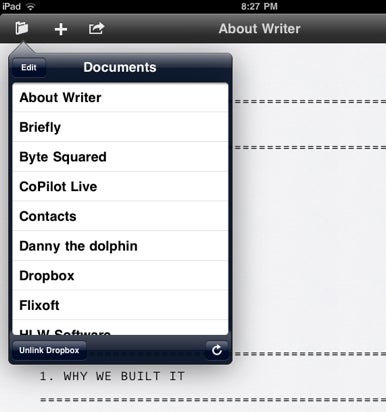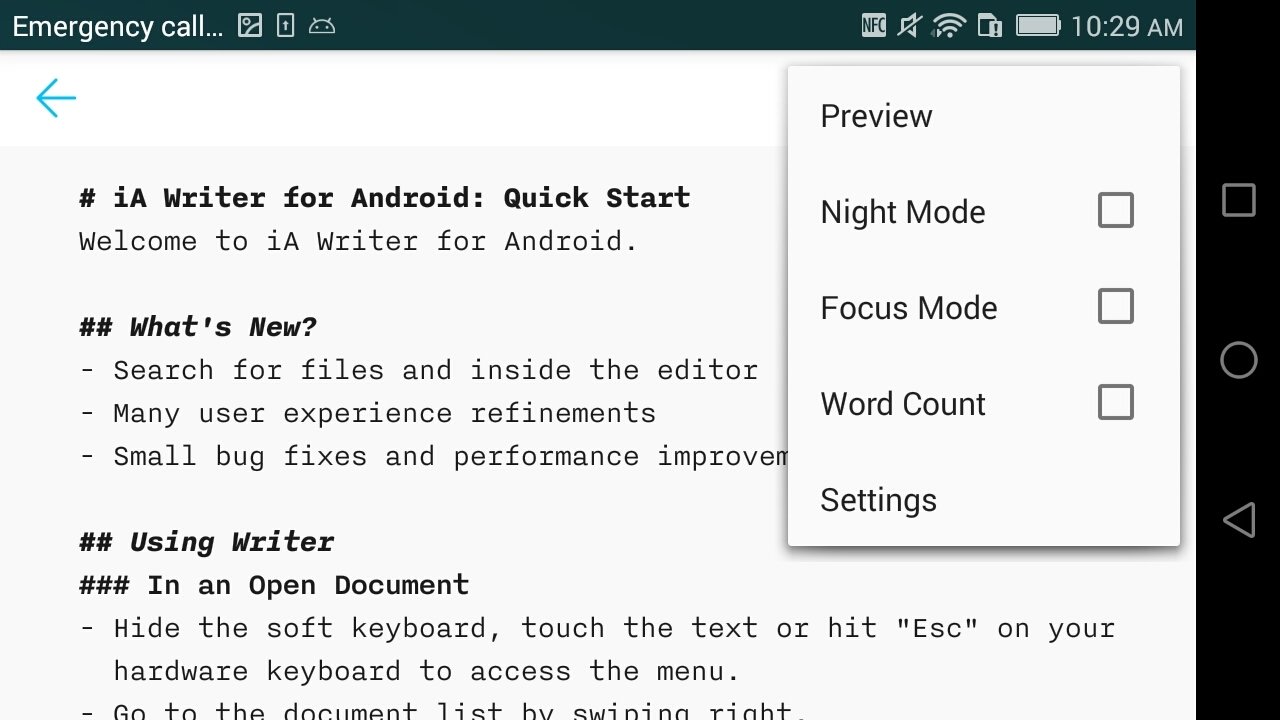
:no_upscale()/uploads/media/picture/2023-04-24/vignette-secondaire-ia-3-644682983ac3f.png)
It also has superb integration with WordPress, which shaves so much time off my production workflow (you can export to Word too, if you wish). This automatically creates the markdown required for the hyperlink. For instance, if you want to add a hyperlink to a piece of text, you simply copy the URL, highlight the passage in question, and hit paste. Ulysses has some lovely little tricks, too. The latter is vital for me, as it gives me somewhere to place reference material and prevent constant app switching – something you cannot do easily in Word. To the right, there’s a mini ‘dashboard’, which features stats about your work, the ability to set writing targets (I use this to keep tabs on word count), keywords, and a notes section. Folders can also be nestled, colour-coded and identified via different icons.
#Ia writer tutorial mac#
There’s a brilliant library structure to the left-hand side of the app, where you can neatly place everything locally on your Mac or synced via iCloud. If you’re used to Word, it’s transformative.īut Ulysses’ party trick lies in its ability to help you become a productive writer.

You get plenty of white (or black) space and lots of options for the typeface. Ulysses strips the writing experience down to the bare minimum. It’s actually pretty fun and satisfying to know that you’re writing programmatically (ok, in the most basic of forms, but give me some leeway here). Therefore, if you hit OPTION+B to enable bold, that’ll still work, but you’ll notice that Ulysses also places the aforementioned asterisks for you.Īfter a while, you’ll find yourself experimenting with Markdown yourself. It’s enabled by default but accepts the fact you might have been influenced by Word. Ulysses makes Markdown immediately approachable. For me, it means I can write my blog posts in a format that WordPress understands, rather than having to mess around copy/pasting/formatting everything I write. Markdown enables you to easily format text for pretty much any destination. For instance, to create a heading, you just add a hashtag before the first word, and to create bold text, you wrap them in double asterisks. Developed by John Gruber in 2004, Markdown is a simple form of programming for text formatting. You can format stuff, but it relies on something called Markdown to do so.
Ulysses now forms an integral part of my blogging toolkit and has significantly increased my productivity levels when it comes to writing. But the latter suffered from an ageing design and ham-fisted Dropbox sync. Ulyssesīefore Ulysses, I was an avid Scrivener user. All of those controls, options and user interface elements do nothing more than distract and slow you down.įor about two years, Ulysses has been my writing platform of choice, but, recently, I’ve been comparing it to iA Writer. Indeed, the former is why I still use Word occasionally, but that’s only when I have zero choice due to contractual obligations.īut if you’re in the business of writing for a living, it’s the worst possible tool you can use. Granted – there’s no better tool out there (bar Google Docs, possibly) when it comes to collaborating on a piece of text with others or creating a beautiful piece of homework. It’s overwhelming and, in many cases, archaic.

Just take a look at the Word ‘ribbon’ bar we have design options, a reference section, layouts and mailings (yes, that’s still a thing, according to Microsoft). You can do pretty much anything with it when it comes to crafting your thoughts, reports or notes.īut that’s the problem. But I’ve found two apps that deliver, big time, and they neatly illustrate why Word should no longer be anyone’s default writing app. The writing tool I use therefore has quite a task on its hands. I’ll mash multiple keypresses rather than being accurate and measured, and rely far too heavily on autocorrections. I can touch-type, and I’m relatively quick, but over the years, I’ve found myself becoming lazier on the keyboard. I therefore need a tool that helps me get those words down as quickly and efficiently as possible. I’m not the sort of person to count how many words I type each week.


 0 kommentar(er)
0 kommentar(er)
